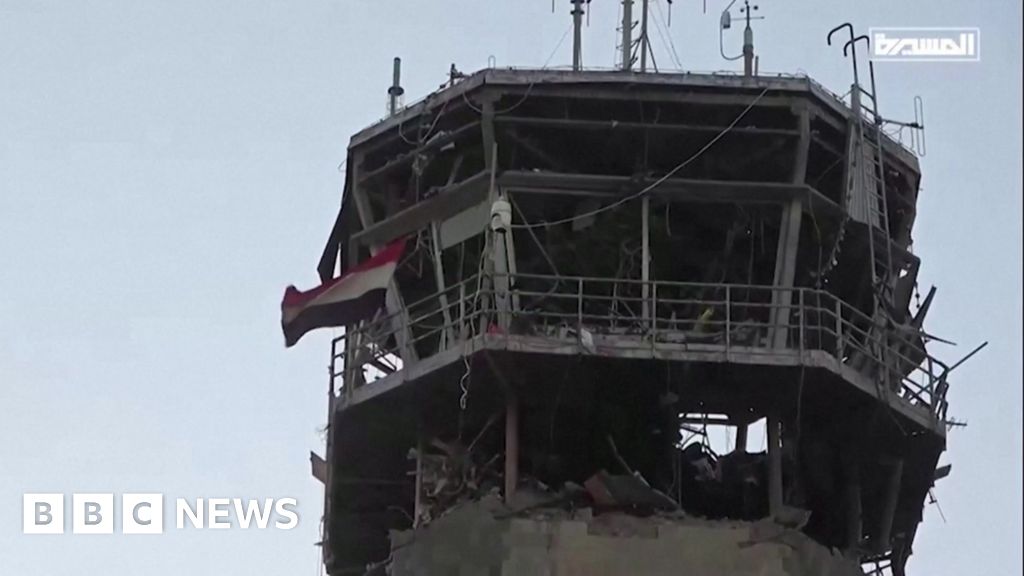
Photo Credit: Reuters
The rebel offensive has targeted areas surrounding Aleppo and advanced toward its outskirts. If rebels succeed in breaking through, it could put a spanner in Assad's control over the crisis-hit country and reignite intense urban warfare.
The Actors Behind The Offensive
The primary force leading the charge is Hayat Tahrir al-Sham (HTS). Once affiliated with terror group al-Qaida, HTS has rebranded itself over the years, claiming to focus on governance and military strategy in opposition-held territories. While the United States and the United Nations continue to designate HTS as a terrorist organisation, its leader, Abu Mohammed al-Golani, has sought to distance the group from its extremist roots.

Photo Credit: Reuters
HTS's transformation includes efforts to promote civilian governance in areas it controls, as well as limited outreach to religious minorities. Despite these changes, the group maintains a controversial reputation, accused of harbouring extremist elements and tolerating militant activities within its territory.
HTS is joined by several Turkish-backed factions, operating under the umbrella of the Syrian National Army. These groups have long had a complex relationship, often fighting among themselves despite their shared opposition to Assad.
Objectives Of The Rebel Offensive
In a video statement announcing the campaign, rebel military commander Lt. Col. Hassan Abdulghany described the operation as a defensive necessity.
"To push back their fire from our people, this operation is not a choice. It is an obligation to defend our people and their land," he said, according to the New York Times. "It has become clear to everyone that the regime militias and their allies, including the Iranian mercenaries, have declared an open war on the Syrian people."
The rebels' immediate goals include halting airstrikes on civilian areas, reclaiming territory, and cutting off critical supply routes for government forces. Their progress so far has been rapid, capturing several villages, strategic highway interchanges, and military bases in Aleppo province.
The Assad Regime's Response
Syrian state media has reported fierce resistance by government forces, claiming to have inflicted losses on rebel fighters. The Syrian military, bolstered by Russian air support, has launched intense airstrikes on opposition-held areas, including the cities of Idlib and Atareb. Civilian casualties have mounted, with rescue groups like the White Helmets reporting dozens of deaths.
Iran, a key ally of Assad, has also suffered losses in the offensive. Among the casualties is a senior commander of Iran's Revolutionary Guards.
The Assad family, a Shia offshoot, has long relied on its alliance with Iran to stay in power. This alliance has been especially beneficial since 2011, when President Assad first faced an anti-government uprising.
After Syria plummetted into chaos in 2011, Iran has been accused of providing around 80,000 fighting personnel to Assad's army while Russia provided air support.
Regional Dynamics
The timing of this offensive comes at a time when Iran and its proxies, including Hamas and Hezbollah, are engaged in conflicts elsewhere. Israel's military campaign against Hezbollah in Lebanon and Hamas in Gaza has strained their resources. Additionally, Russia's focus on its war in Ukraine limits its capacity to provide substantial reinforcements in Syria.

Photo Credit: Reuters
Turkey, a key player in Syria, backs some of the rebel factions involved in the offensive. Israel continues its airstrikes on Iranian-linked targets within Syria, seeking to disrupt arms shipments to Hezbollah. This creates a volatile mix of overlapping conflicts.
The renewed fighting has had devastating consequences for Syrian civilians, particularly in opposition-held areas. The International Rescue Committee estimates that nearly 7,000 families have been displaced recently.
Northwestern Syria is home to approximately 4 million people, most of whom have been displaced multiple times during the conflict. Many live in overcrowded camps with limited access to food, water, and medical care. The resurgence of violence threatens to worsen these conditions and trigger another wave of mass displacement.
Implications For The Assad Regime
While his regime controls about 70 per cent of Syrian territory, much of this control relies on the backing of external allies like Russia and Iran.
Additionally, the offensive risks reigniting broader conflicts within Syria. The Islamic State, though largely defeated, still operates in the region through sleeper cells. A weakening of government control could create openings for these extremist groups to regroup and expand their activities.

 3 weeks ago
5
3 weeks ago
5










 English (US) ·
English (US) ·